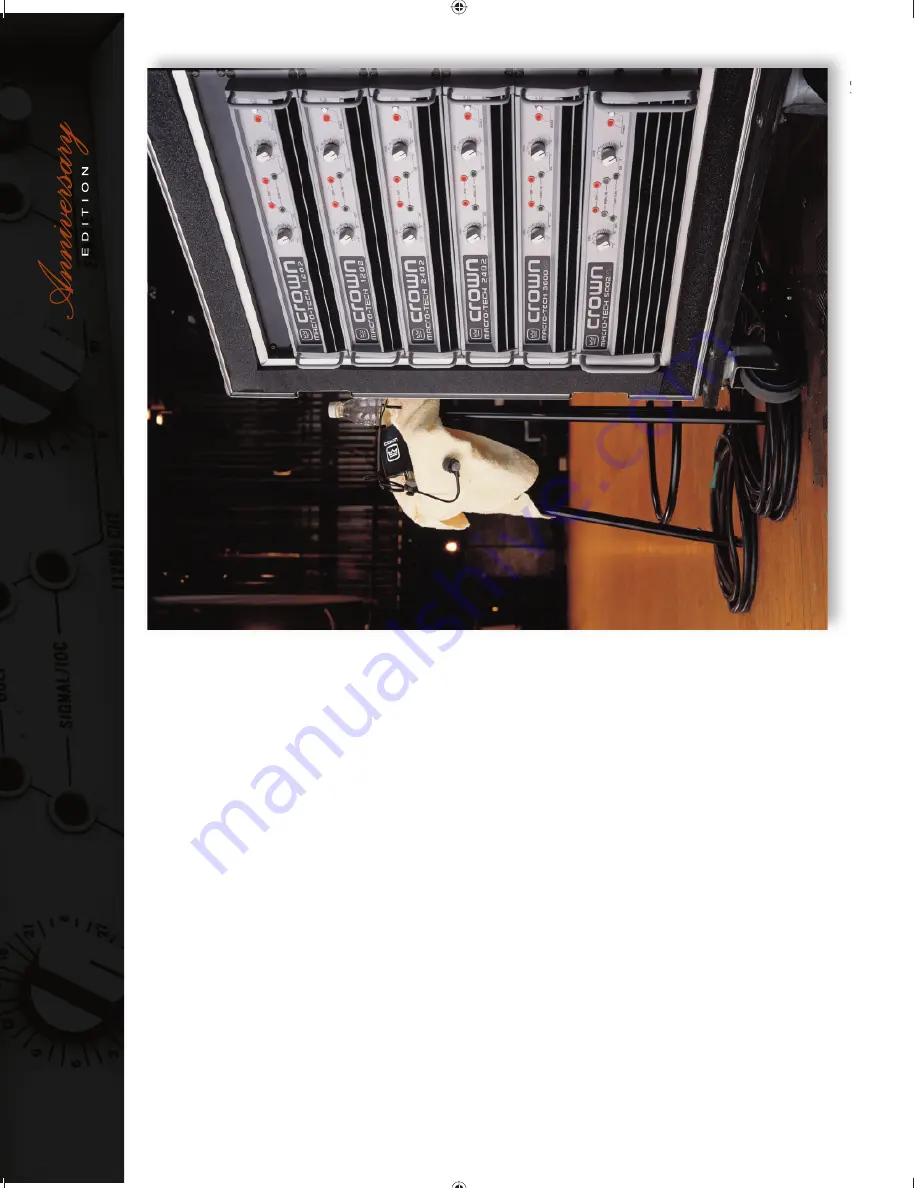
15
Nor
mally
, the power supplies operate in the high-curr
ent (low-impedance)
mode for maximum ther
mal effi
ciency
. When the voltage demand spikes, the
supplies quickly shift into high-voltage (high-impedance) mode. Because
voltage and curr
ent r
equir
ements var
y with the output level and fr
equency
content of the sour
ce signals, the power supplies ar
e designed to be able to
continually switch between the two modes as needed with no degradation
to the audio signal. With VZ, you get
not only maximum power
, but also the
best power matching to your load.
ILoad/ILimit (MA-5000)
This LED indicates the maximum r
eal-world load that you can put on your
amplifi
er
. The ILoad/ILimit featur
e is designed to help you get the maximum
power out of your amplifi
er
. In the r
eal world, loudspeaker impedance varies
with fr
equency
, and loudspeaker impedance ratings ar
e only appr
oximations.
Without ILoad/ILimit, you have to do some lengthy calculations to
appr
oximate the maximum number of loudspeakers you can drive with
the amplifi
er — and this does not allow for a 4-ohm loudspeaker whose
impedance dr
ops below 2 ohms at 80 Hz.
This is why your amplifi
er has ILoad/ILimit. The ILoad function tur
ns a
channel’
s ILoad/ILimit indicator gr
een when it senses that curr
ent is fl
owing to
the load. The ILimit function tur
ns the indicator r
ed when it r
eaches maximum
curr
ent output. This makes it possible to connect r
eal loudspeakers and
conduct r
ealistic tests to fi
nd the maximum number of loudspeakers that
should be connected. T
o
do a test like this, you can operate under worst-
case conditions and continue to connect additional loudspeakers in parallel
with each output until the ILoad/ILimit indicator tur
ns r
ed. The optimum load
is achieved befor
e the ILoad/ILimit indicator tur
ns r
ed, so disconnecting the
last added loudspeaker gives you an optimized load.


























